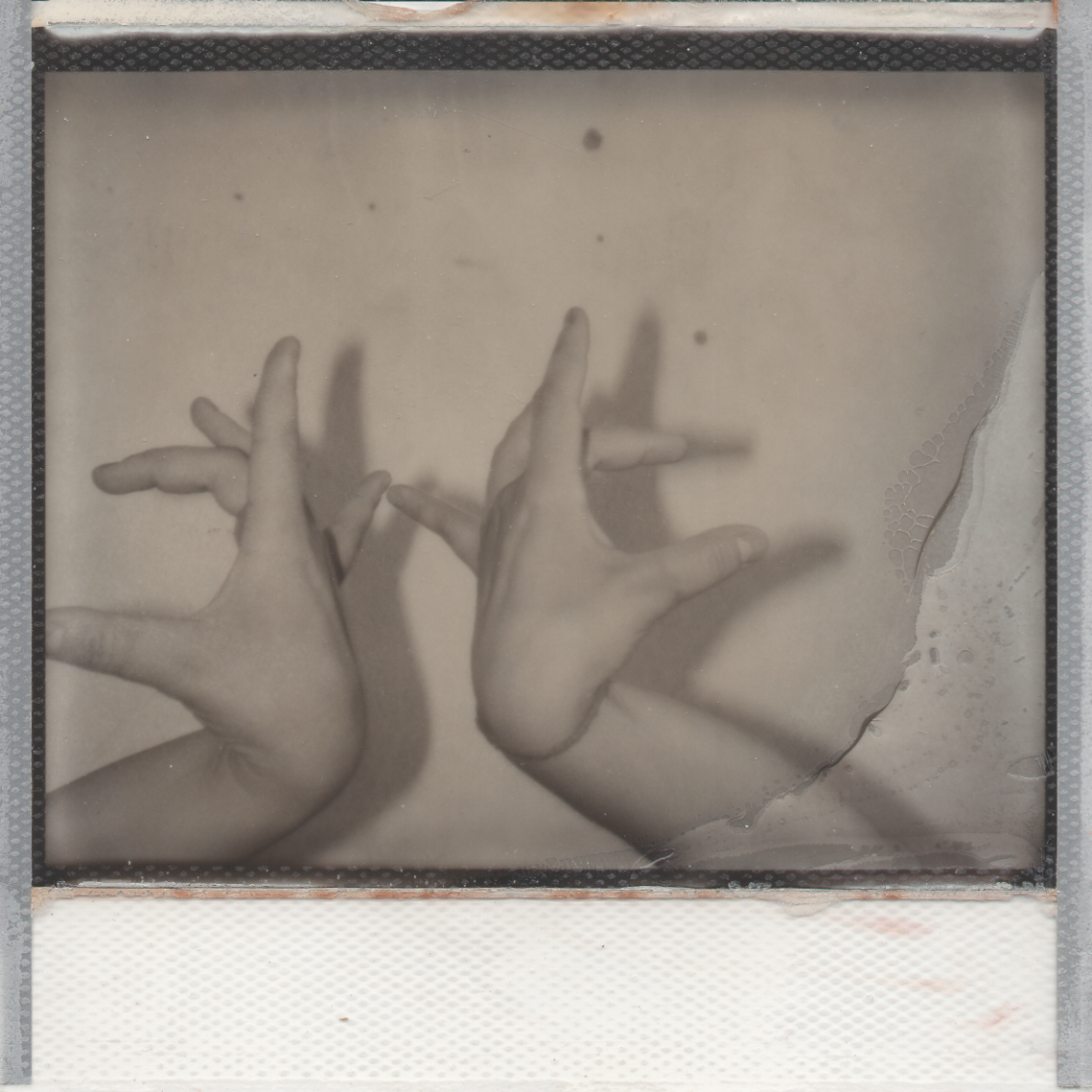MANOS DE MUJERES


DE
Die digitalen Fotografien zeigen die Hände von Frauen in Bewegung – zumeist bei ihrer beruflichen Tätigkeit. Der Ausgangspunkt sind Aufnahmen aus Castilblanco de los Arroyos, Spanien – die Hände der Frauen des Dorfes und der Residenz.
Die Auflösung des Fotomaterials (der Polaroids) verstärkt die geisterhafte Geschichte, welche auch die titelgebenden Frauenhände in manos de mujeres (2019) zu erzählen scheinen. Sie arbeiten, tanzen und erzeugen Musik – dabei pendeln sie in der Collage der neun Polaroids zwischen funktioneller Geschäftigkeit und ausdrucksvoller Geste. Einige Hände sind einzeln, andere gehören zu einer Person – davon zeugen die linke und rechte Hand – und wieder andere Gruppen von Händen gehören zu mehreren Personen. Hände werden hier nicht nur als kreatives Werkzeug oder als individuelle Ausdrucksform betont, sondern verweisen auf ihre Eigenschaft als Kommunikationsmittel, einen Weg Kontakt aufzunehmen, zu festigen und damit letztendlich auf die menschliche Fähigkeit zur Kooperation.
Während die Serie third skin (fremde Betten) (2019) ebenfalls ein Narrativ beleuchtet, scheint es das genaue Gegenteil von manos de mujeres zu sein. Statt einem geschäftigen Miteinander und lebensfrohen Gesten erahnen wir einsame und wechselnde Betten, die Situationen reichen von anonym bis absurd.
Lebendige Zusammenarbeit und einsame Schauplätze – beide Arbeiten erzählen in ganz eigener Weise vom Leben auf einer Art Wanderschaft, das für eine freischaffende Künstlerin nahezu unumgänglich ist.
9 schwarzweiß Polaroids, demontiert, in einem Rahmen montiert, 40x40cm
Fortlaufende Serie von schwarzweißen, digitalen Aufnahmen auf Photo Rag Papier abgezogen, 20x20cm, 1/1
Text: Ines Rüttinger: Schichten – Layers, 2021







EN
The digital photos show hands of women in movement—the action is mostly connected with their profession. The series started at Castilblanco de los Arroyos, Spain—with woman from the village and the residency.
The dissolution of the photo material heightens the ghost-like story, which also seems to be telling the story of the eponymous women’s hands manos de mujeres. In the collage consisting of nine Polaroids, these hands are working, dancing and playing music—and in doing so they hover between functional activity and expressive gesture. Some hands are alone, others belong to one person—given the left and the right hand—and other groups of hands belong to several people. Hands are not only emphasised here as a creative tool or individual form of expression, they also point to their capacity as a means of communications, a way of making and consolidating contact, and thus ultimately to the human capacity for cooperation.
While the series third skin (fremde Betten) (2019) also illuminates a narrative, it seems to be the exact opposite of manos de mujeres. Instead of a busy togetherness and joyful gestures, what we construe here are lonely and changing beds, the situations range from anonymous to absurd.
Lively collaboration and lonely scenarios – both works speak, each in its own way, about life as a kind of peregrination, on the move, something that is almost unavoidable for a free-lance artist.
9 black-and-white polaroids, dismantled, framed together, 40x40cm
Ongoing series of black-and-white digital photography, printed on photo rag paper, 20x20cm, 1/1
Text: Ines Rüttinger: Schichten–Layers, 2021





